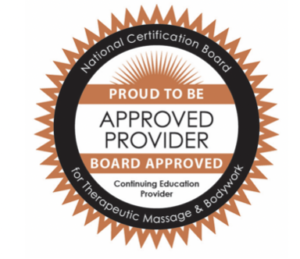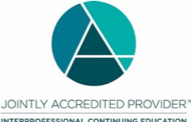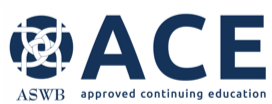Level I: Sept 20th, Sept 27th, Oct 4th, Oct 11th
Level II: Oct 18th, Oct 25th, Nov 1st, Nov 8th
Level III: Nov 15th, Nov 22nd, Nov 29th, Dec 6th
Continuing Education Credits
Live and Home Study CEs:
Psychologists (APA), Social Workers (ASWB), Nurses (ANCC) Yoga Alliance (YACEP), Licensed Massage Therapists (NCBTMB) & NY LMTs
*Closed Captioning is now available during the live sessions.
Can't make it?
All live lectures are recorded and made available within 48 hours after the live lecture. Recordings are available for 90 days after the last class.
Each lecture ends with time for Q&As
Those who cannot attend live can submit questions by email.
All participants in this course will be invited to attend complimentaryCommunity Gathering events throughout the year.
Want to stay up to date?
Join our mailing list to be notified!

Experiencing trauma can cause us to respond by entering into a state of survival. Even after the traumatic event or events have ended, we may find that the actions of truncated survival become integrated into the nervous system and can lead to long-term side effects on the body. Eventually, the strategies that kept us alive can keep us from fully living.
In this three part, 12-session certification course, you will learn to recognize and safely resource the tension patterns of these survival responses. This course provides strategies for managing the nervous system that can help us deal with anxiety, overthinking, emotional flooding, and being overwhelmed.
As we develop an understanding of how to regulate the nervous system through various strategies, new choices become available for the neuro-muscular system, which can allow us to cultivate self-awareness around past behaviors, thoughts, and emotions. This gives us the opportunity to bring the nervous system's functionality back online so we can fully embrace life.
WHAT YOU WILL LEARN
This program will focus on how the cascade of activation and immobilization, which is designed to help us survive overwhelming experiences, can be addressed to facilitate enhanced quality of life. Strategies will emphasize bottom-up self-regulation, co-regulation, expanded window of tolerance, and interoceptive awareness. Resourcing techniques will be practiced to facilitate bridging the gap between external safety and internal safeness.
LEVEL l
LEVEL ll
LEVEL lll
In order to survive, many of us needed to be silent. Trauma recovery involves reconnecting to our capacity for vocalization in an embodied way. This class will explore:
In order to maintain a connection with the caregivers in our early lives, many of us had to learn to inhibit or have fearful relationships to certain developmental actions of attachment - reaching, grasping, pulling and having.
These actions of attachment form the basis for embodied asking, receiving, giving and letting go that underscore our relationships
In order to not let in unpleasant experiences and/or survive toxic environments, many of us needed to create a “nourishment barrier”. This nourishment barrier can also prevent us from letting in the good stuff: acknowledgement from others, kindness, safeness, opportunities for engagement and reciprocity.
In the spirit of addressing historic and systemic barriers to participation, there are several equity pricing scholarship spaces available for this training. Priority of access for BIPOC and LGBTQ+ individuals, individuals living with disabilities, and individuals living with lower income. Please contact: [email protected] with your request.
$240.00 USD
Online Course
Included features:
$100.00 USD
Online Course
Included features:
$100.00 USD
Online Course
Included features:
$100.00 USD
Online Course
Included features:
In order to receive a Certificate of Completion, participants do not need to attend live.
Level I:
Level II:
Level III:

Collectively Rooted has been approved by NCBTMB as a Continuing Education Provider, AP #: 1000629. Please check with your credentials board or state license board to ensure that any courses you take can be applied for credential renewal. It is the participant's responsibility to check with their individual state boards to verify CE requirements for their state. CE credits for this course has been approved for Live and Home Study! Please direct any questions to [email protected]
2022 Certificate in Somatic Embodiment & Regulations Strategies
Live Online -
Level I: Sept 20, Sept 27, Oct 4, Oct 11
Level II: Oct 18, Oct 25, Nov 1, Nov 8
Level III: Nov 15, Nov 22, Nov 29, Dec 6
Enduring Online through September 20, 2023
Accreditation Statement
In support of improving patient care, this activity has been planned and implemented by Amedco LLC and Collectively Rooted (CR). Amedco LLC is jointly accredited by the Accreditation Council for Continuing Medical Education (ACCME), the Accreditation Council for Pharmacy Education (ACPE), and the American Nurses Credentialing Center (ANCC), to provide continuing education for the healthcare team.

Nurses (ANCC) Credit Designation
Amedco LLC designates this activity for a maximum of 12.00 ANCC contact hours.
Psychologists (APA) Credit Designation
Amedco LLC designates this activity for a maximum of 12.00 Psychologist contact hours.
The following state boards accept courses from APA providers for Counselors: AK, AL, AR, AZ, CA, CO, CT, DC, DE, FL, GA, HI, IA, ID, IL, IN, KS, KY, MD, ME, MO, NC, ND, NH, NE, NJ, NM, NV, OK, OR, PA, RI, SC, SD, TN, TX, UT, VA, WA, WI, WY
MI: No CE requirements
The following state boards accept courses from APA providers for MFTs: AK, AR, AZ, CA, CO, CT, DE, FL, GA, IA, ID, IN, KS, MD, ME, MO, NE, NC, NH, NJ, NM, NV, OK, OR, PA, RI, SC, SD, TN, TX, UT, VA, WA, WI, WY
MI: No CE requirement
The following state boards accept courses from APA providers for Addictions Professionals: AK, AR, CO, CT, DC, DE, GA, IA, IN, KS, LA, MD, MO, MT, NC, ND, NE, NJ, NM, NY (outstate held)*, OK, OR, SC, UT, WA, WI, WY
MA / MFTs: Participants can self-submit courses not approved by the MAMFT board for review.
The following state boards accept courses from APA providers for Social Workers: AK, AR, AZ, CA, CO, DE, FL, GA, ID, IN, KY, ME, MN, MO, NE, NH, NM, OR, PA, VT, WI, WY
* If the activity is held live in the state of NY, then direct addictions board is required, ie: NAADAC. If the activity is held outside NY, is virtual, enduring or remote, it is considered "outstate" and this reciprocity applies.
Social Workers (ASWB) Credit Designation
As a Jointly Accredited Organization, Amedco is approved to offer social work continuing education by the Association of Social Work Boards (ASWB) Approved Continuing Education (ACE) program. Organizations, not individual courses, are approved under this program. State and provincial regulatory boards have the final authority to determine whether an individual course may be accepted for continuing education credit. Amedco maintains responsibility for this course. Social Workers completing this course receive 12.00 GENERAL continuing education credits.

The following state boards accept courses offering ASWB ACE credit for Social Workers: AK, AL, AR, AZ, CA, CO, CT, DC, DE, FL, GA, HI, ID, IL, IN, IA, KS, KY, LA, ME, MD, MA, MI, MN, MS, MO, MT, NC, ND, NE, NH, NM, NV, OH, OK, OR, PA, RI, SC, SD, TN, TX, UT, VT, VA, WA, WI, WV, WY
* WV accepts ASWB ACE unless activity is live in West Virginia, then an application is required.
The following state boards accept courses offering ASWB ACE credit for Counselors: AK, AR, AZ, CA, CO, CT, DC, FL, GA, IA, ID, IL, IN, KS, MA, MD, ME, MO, ND, NE, NM, NH, NV, OK, OR, PA, TN, TX, UT, VA, WI, WY
AL/Counselors: Activities not providing NBCC approval may be approved by the Board for individual licensees upon receipt of acceptable documentation prior to the activity. Please send course details to your licensing board for approval BEFORE the event. No approvals afterward by the board.
MI: No CE requirement
The following state boards accept courses offering ASWB ACE credit for MFTs: AK, AR, AZ, CA, CO, FL, IA, ID, IN, KS, MD, ME, MO, NC, NE, NH, NM, NV, OK, OR, PA, RI, TN, TX, UT, VA, WI, WY
MA / MFTs: Participants can self-submit courses not approved by the MAMFT board for review.
MI: No CE requirement
The following state boards accept courses offering ASWB ACE credit for Addictions Professionals: AK, CA, CO, CT, GA, IA, IN, KS, LA, MO, MT, ND, NM, NV, OK, OR, SC, WA, WI, WV, WY
We will honor cancellation requests submitted by email [email protected] if an attendee cancels at least 7 Days in advance.
Cancellation requests submitted after the above dates will not be accepted. There will be a $25 fee taken out of all refunds issued.
Sign up with your email to receive news and updates.